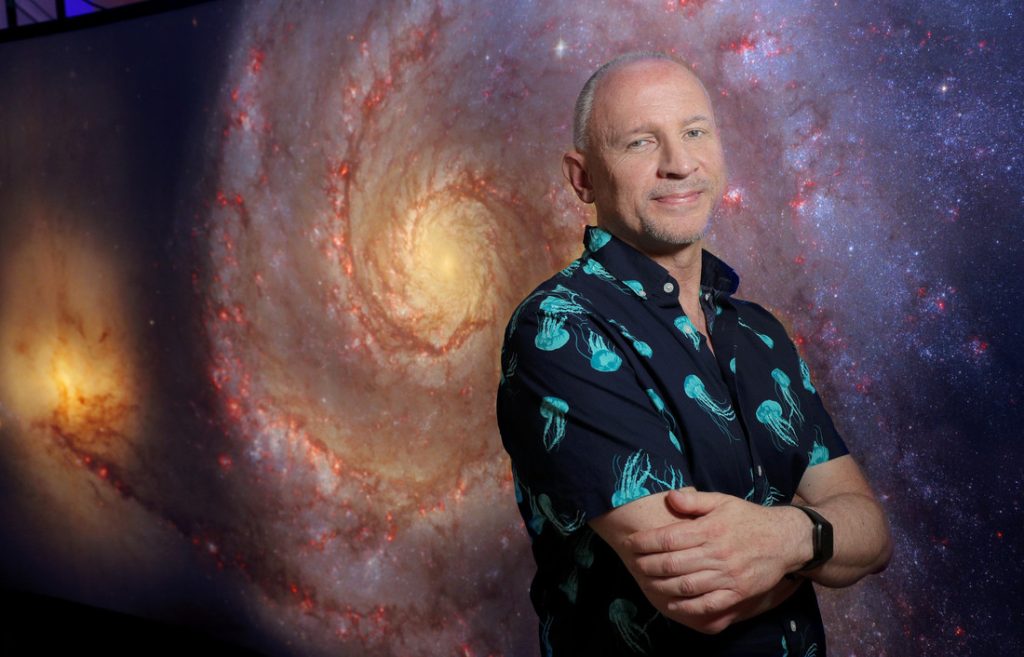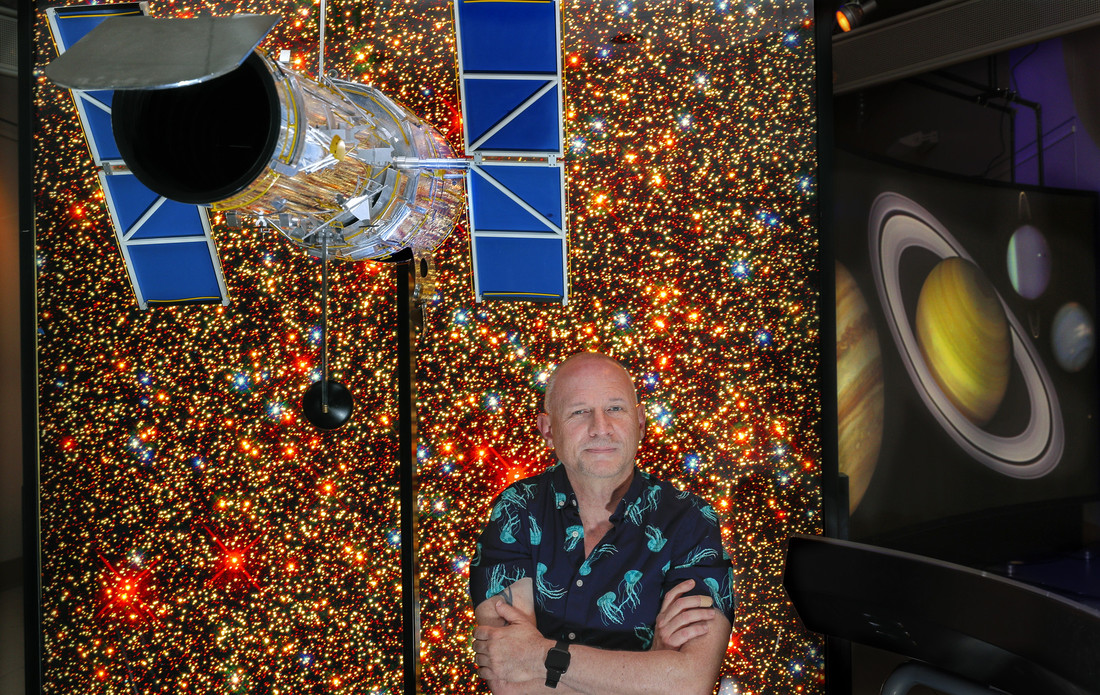Heath shares love of astronomy with central Arkansas
Last month, many scientists were saddened by the ending of the television program, “The Big Bang Theory,” which popularized physics, astronomy, and other scientific topics that often seemed out of reach to people.
Darrell Heath, an animal lab technician at the University of Arkansas at Little Rock, can especially relate to the child character of Sheldon, a young misunderstood genius growing up in a small, religious, conservative town in Texas, portrayed in the “The Big Bang Theory” spinoff “Young Sheldon.”
“I can very much relate to young Sheldon, a very smart kid growing up in the South,” Heath said. “I can relate to a lot of the things Sheldon goes through with his family, teachers, and church. I relate to young Sheldon, not as a genius by any means, but as a kid who just doesn’t feel as though he fits in with the rest of the crowd.”
Often described as UA Little Rock’s space expert (though Heath calls himself a “devout astronomy enthusiast”), he is the man who sends out emails about the best time to view the International Space Station, planets, meteor showers, eclipses, and other heavenly bodies.
Heath, who has a passion for space and astronomy that he loves to share with others, thinks that most people have a natural interest in space.
“I think people are inherently interested in the mysterious and unknown, and space represents that,” he said. “The night sky has inspired us over the centuries. It’s inspired religious leaders, artists, poets, scientists, and scholars. Before we knew what stars and planets were, we were looking at the night sky and telling stories about gods and monsters. The stars were our storybooks.”
After getting involved in amateur astronomy in 2005 and taking an astronomy course with Dr. Tony Hall at UA Little Rock, Heath has served as past president and is the current outreach coordinator of the Central Arkansas Astronomical Society, which hosts star parties and other educational events on space and astronomy.
He is also a volunteer with the Jet Propulsion Laboratory’s Solar System Ambassador program, dedicated to conveying to the public information about NASA’s ongoing missions to explore the solar system.

“I do outreach programs for NASA’s Jet Propulsion Laboratory and talk about the latest missions that are happening in the solar system,” Heath said. “This has been a fun experience for me. I travel around the state and do programs in schools and parks. It’s always nice to see the support people have for science, space, and NASA.”
In 2015, Cheryl Hellman, director of university television, saw an opportunity to share Heath’s knowledge with a larger audience.
“I am always looking for interesting people at UA Little Rock that we can put on the university television channel,” Hellman said. “Darrell had been putting out announcements about interesting things that were going on in the sky. We talked about doing a monthly television segment. That became ‘The Night Sky.’”
Every month, Heath produces a short episode of “The Night Sky” about topics in space and astronomy. Episodes have included the mythology of the constellations, tips for observing meteor showers and eclipses, a buyer’s guide for telescopes, amazing facts about the moon, and meteorites at UA Little Rock. He also writes companion articles posted on the website that include highlights of night sky for the month and a feature story about a phenomenon in space.
“‘The Night Sky’ has become one of our most popular shows on the university channel,” Hellman said. “You’ll see some episodes on YouTube that have more than 100,000 views. It’s watched all over the globe, and it’s used in classrooms as part of educational programs. It’s a very popular show. Darrell puts a lot of heart and soul into this program.”
Heath said that his newfound popularity as an expert on space has led him to some unusual conversations.
“I get emails from all across the world,” he said. “People always want to know if I have seen a UFO, and kids ask me if I have been in space. I have people come up and tell me what a full moon will do to them.”
While he’s never seen a UFO, a close encounter at one of the Central Arkansas Astronomical Society’s summer star parties led to a memorable experience.
“We did a star party at Pinnacle Mountain State Park one June. There must have been 300 or 400 people in the crowd,” he said. “All of a sudden, I began to notice that people were looking in the sky and pointing their cell phones up there. Up in the sky, there was a formation of green lights moving slowly across the sky in uniform. It was kind of creepy at first. Then we turned our telescopes on it, and we realized it was a group of Chinese lanterns that the wind was carrying away in a pattern. At first, it looked like an alien invasion, but it turned out to just be a wedding.”
For anyone interested in getting started in astronomy, Heath recommends “The Stars: A New Way to See Them” by H.A. Rey, the inventor of Curious George.
“All a person needs to get started stargazing is just their eyes,” Heath said. “We have all looked at the sky with wonderment and curiosity. I think people are inherently curious about the universe I see that every time we do a star party. We have hundreds of people show up, and I’m amazed by how excited they are.”
